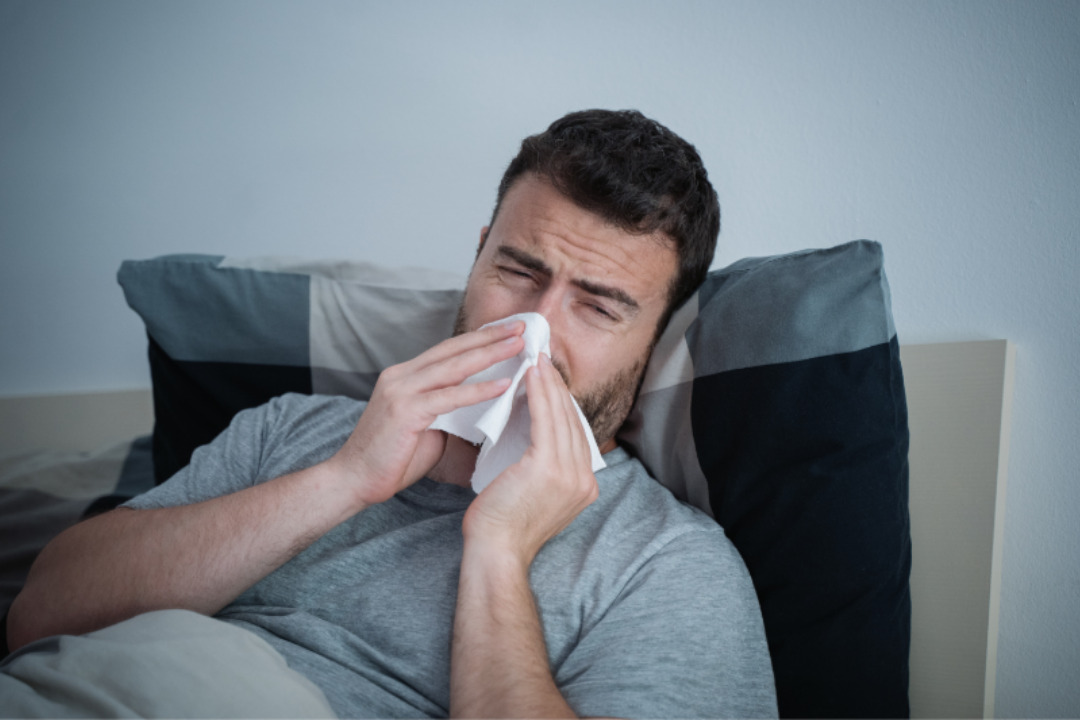Allergy medicines are available in various forms, including pills, liquids, inhalers, nasal sprays, eye drops, skin creams, and injections. These medicines can often be purchased without a prescription, but it’s important to consult with a healthcare professional to determine the best option for your needs.
Antihistamines block histamine, a chemical that causes allergy symptoms. They come in nasal sprays, eye drops, and oral forms. Nasal sprays, such as Azelastine and Olopatadine, relieve sneezing, runny nose, and congestion but may cause drowsiness and a bitter taste.
Antihistamine eye drops, like Ketotifen and Olopatadine, reduce itchy, red eyes but can cause headaches and dry eyes. Oral antihistamines, such as Diphenhydramine and Cetirizine, ease various allergy symptoms but can cause drowsiness.
Corticosteroids reduce inflammation caused by allergies and are available as nasal sprays, eye drops, pills, and skin creams. Nasal sprays like Fluticasone and Mometasone are effective for hay fever but may cause nosebleeds and irritation. Corticosteroid eye drops, such as Loteprednol, are used for severe eye symptoms but carry risks like cataracts and glaucoma.
Oral corticosteroids like Prednisone treat severe allergic reactions but have long-term risks, including osteoporosis and high blood sugar. Corticosteroid skin creams relieve allergic skin reactions but can thin the skin with prolonged use.
Mast Cell Stabilizers prevent the release of chemicals that cause allergic reactions and are available in nasal spray and eye drop forms. Cromolyn is a common nasal spray, while prescription eye drops like Lodoxamide are used when antihistamines are ineffective. These medicines require several days to achieve full effects.
Immunotherapy involves exposing the body to allergens in controlled amounts to build tolerance. It is useful for allergies to pollens, dust mites, and molds. This treatment can be administered via shots or sublingual tablets. Shots, such as Dupilumab and Omalizumab, are given weekly or bi-weekly, while sublingual tablets treat allergies to dust mites and pollens.

Decongestants provide quick relief for nasal and sinus congestion but are not suitable for long-term use. Nasal sprays like Oxymetazoline should be used sparingly to avoid rebound congestion. Oral decongestants, such as Pseudoephedrine, can increase blood pressure and cause irritability. Combination medicines that include both antihistamines and decongestants are also available.
Leukotriene Inhibitors block chemicals that cause allergy symptoms and are used for asthma and hay fever. Montelukast is a common example, but it can have serious side effects, including mood changes and suicidal thoughts.
Emergency Allergy Medicines like epinephrine are used for anaphylaxis, a severe allergic reaction that can be life-threatening. Auto-injectors like EpiPen provide a rapid dose of epinephrine and are crucial for individuals with severe allergies. It’s important to carry two auto-injectors and to seek immediate medical help after use.
Consult with your healthcare team to find the most effective and safe allergy medicine for your specific needs. This is especially important for pregnant or breastfeeding women, individuals with chronic health conditions, those taking other medications, children, and older adults. Keeping track of your symptoms and medication use can help your healthcare team tailor the treatment to your needs.
